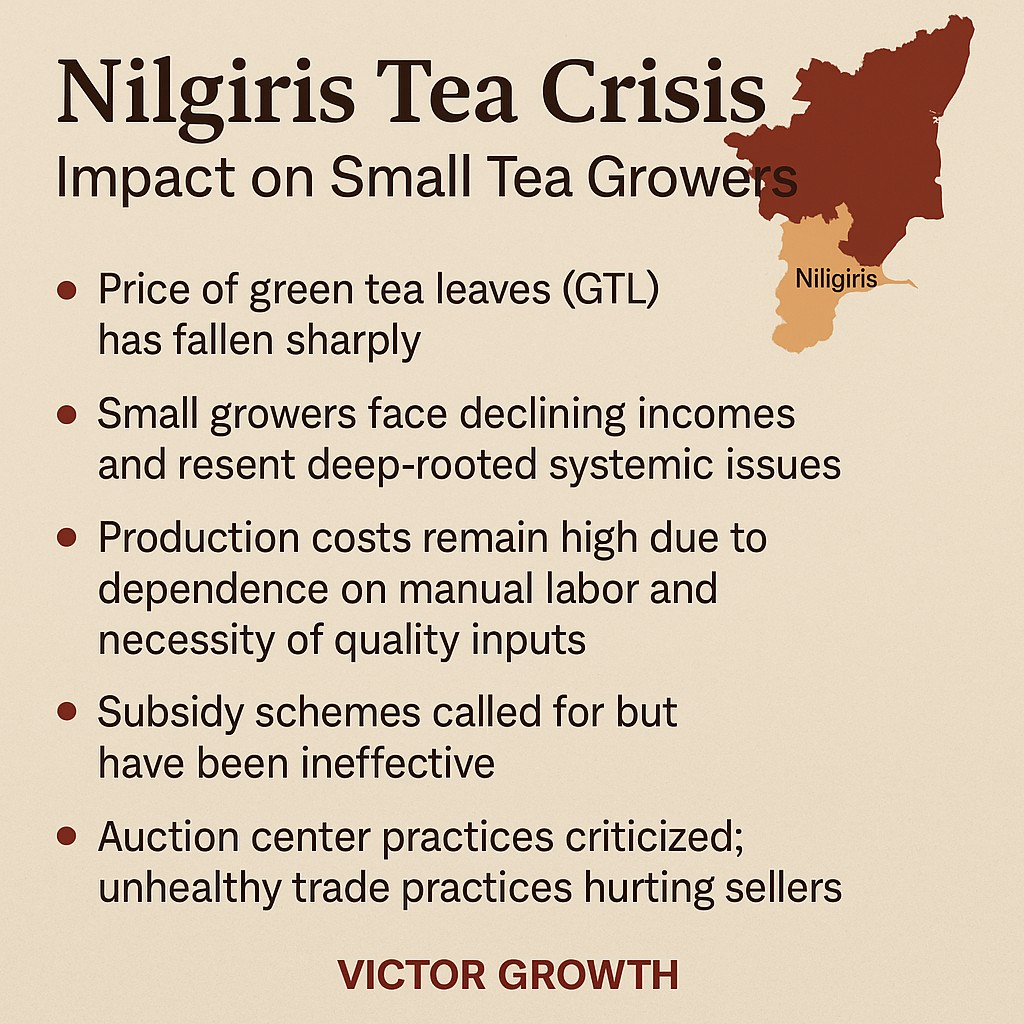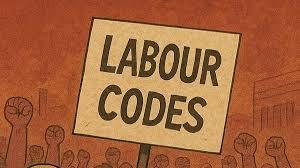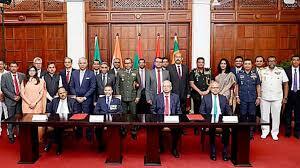1. Background
Nilgiris tea industry facing persistent cost price crisis for Green Tea Leaves (GTL).
Farmers, mostly Badagas, protested violently in late 1990s–2000 due to plummeting GTL prices.
Historic support from USSR collapsed after 1991 → worsened crisis.
2. Key Issues Identified
Over-reliance on Russian exports (market crash hurt small growers).
High production costs proportional to quality.
Excess factories in weak feeder areas → poor GTL quality.
Auction malpractices (brokers advancing money to farmers, fixing rates).
Disparity in sales: Coonoor sales rose post-1990s while other regions declined.
Despite all this → average prices stagnated at lowest levels.
3. Current Situation (as per Tea Board of India)
Nilgiris tea industry: 46,481 small growers, plantation area of 34,408.85 hectares.
Main demands:
Minimum GTL price.
Base auction price.
Recognition of Nilgiris plantation crop as an essential commodity under Ministry of Agriculture.
Presently remains under Ministry of Commerce.
4. Challenges for Small Growers
Rising labour costs.
Lack of branding & direct trade opportunities.
Failure of government subsidies & schemes.
Resistance to intercropping suggestions.
Younger generation planters shifting to IT sector instead of continuing tea cultivation.
5. Possible Solutions / Recommendations
Innovation & mechanisation (plucking, pruning) to reduce costs.
Explore self-employment models to cut labour dependence.
Branding and direct trade to improve margins.
Expand exports to CIS countries & untapped markets.
INDCOSERVE & TANTEA (govt-run) could act as price leaders through bulk procurement.
Potential for value-added products → “Nilgiris Champagne Teas”.
6. Conclusion
Nilgiris tea, though globally reputed, is trapped in a sustained cost-price crisis.
Without reforms in pricing, marketing, and grower support, small growers remain vulnerable.
The future lies in innovation, market expansion, and recognition under agriculture policy.








